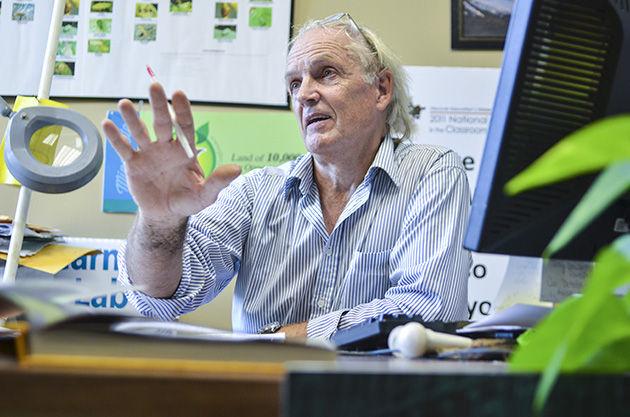It is a biannual phenomenon at risk of disappearing all together, but monarch butterflies are again poised to pass through Texas on a 3,000-mile journey from Canada to their wintering grounds in Mexico.
A recent University of Guelph study said 90 percent of monarch habitat has been destroyed, prompting many in the scientific community to seek government action. Although evidence from the spring migration points to a slight population increase, the monarch’s numbers remain dangerously low and many researchers are concerned with the migration’s survival.
“We’re at risk of losing a symbolic backyard beauty that has been part of the childhood of every generation of Americans,” said Tierra Curry, a senior scientist at the Center for Biology Diversity, in a press release. “The 90 percent drop-off in the monarch’s population is a loss so staggering that in human-population terms it would be like losing every living person in the United States except those in Florida and Ohio.”
Curry’s statement came on the heels of a petition filed Aug. 26 by the Center for Biological Diversity and several partners to the U.S. Fish and Wildlife Services. The petition claims that 165 million acres of habitat — an area roughly the size of Texas — has been destroyed. This area amounts to nearly a third of the butterfly’s summer breeding grounds.
Craig Wilson, senior Texas A&M research associate and butterfly enthusiast, agrees with the petitioners that breeding ground habitat loss is the main cause behind the migration loss.
While several butterfly generations make the spring migration, Wilson said the fall migration is unique because a single generation makes the full 3,000-mile journey. This magnifies the importance of the monarch’s habitat — there must be enough food to fuel a single butterfly generation.
Wilson said although milkweed, a wildflower crucial to the monarch’s reproduction, has become scarce, the fall migration needs pollinators such as Golden Rod to maintain the monarch’s energy needs.
“What is threatened is the migration, which is one of the most epic journeys in nature,” Wilson said. “Other butterflies migrate, but not the single generation, the 3,000 miles … that is what’s quite incredible.”
Orley Taylor, professor of ecology and evolutionary biology at the University of Kansas, founded Monarch Watch, an organization concerned with monarch conservation. He greatly attributes the monarch decline to herbicide-resistant cash crops — farmers can spray their fields with herbicides and keep their crop intact, but the wildflowers critical to the monarch migration’s survival are killed in the process.
Climate change has also negatively impacted the monarch. Harsh winters and late springs over the past three years have limited the reproductive success of the summer-breeding population.
However, Taylor said he predicts modest population increases this year in both the migration and wintering sites. Taylor said he believes the positive weather conditions and an increase in the number of monarch sightings are supporting factors to his prediction.
Wilson predicts monarchs will make it to College Station by the end of September and will pass through until October. He also said to expect an encouraging bump in the monarch’s population this fall.
“All the factors I’ve researched indicate that there will be more monarchs migrating this fall and at the overwintering locations by mid December when the colonies are measured,” Wilson said.
Wilson said students can help the migration by planting wildflowers such as Lantana and Golden-Rod.
Christine Merlin, assistant A&M biology professor, studies long-distance butterfly migration and thinks student efforts to plant nectar and pollinator plants is crucial to the monarch migration.
“I think it would be terrific to have students involved in the development of forestation on campus,” Merlin said. “This campus is enormous. That could be a way to implement forestation where butterflies could nectar [and] where milkweed could be planted.”
A&M researchers, scientists push for monarch conservation
September 4, 2014
photo by Jonathan Sheen
Craig Wilson, A&M researcher, said the monarch migration is in critical need of restored habitat.
Donate to The Battalion
Your donation will support the student journalists of Texas A&M University - College Station. Your contribution will allow us to purchase equipment and cover our annual website hosting costs.























